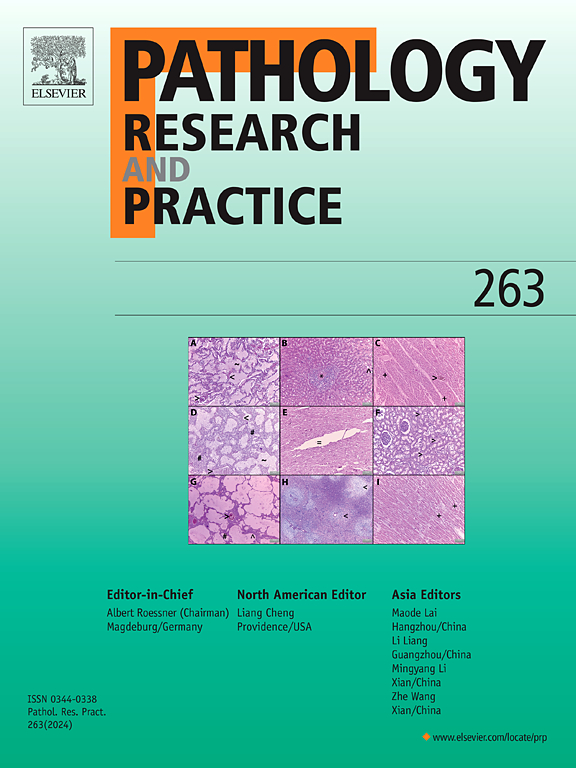Identification of DNA methylation signatures in follicular-patterned thyroid tumors
IF 2.9
4区 医学
Q2 PATHOLOGY
引用次数: 0
Abstract
Background and aims
Follicular-patterned thyroid tumors (FPTTs) are frequently encountered in thyroid pathology, encompassing follicular adenoma (FA), follicular thyroid carcinoma (FTC), noninvasive follicular thyroid neoplasm with papillary-like nuclear features (NIFTP), and follicular variant of papillary thyroid carcinoma (fvPTC). Recently, a distinct entity termed differentiated high-grade thyroid carcinoma has been described by the 5th edition of the WHO classification of the thyroid tumors, categorized as either high-grade fvPTC, high-grade FTC or high-grade oncocytic carcinoma of the thyroid (OCA). Accurate differentiation among these lesions, particular between the benign (FA), borderline (NIFTP) and malignant neoplasms (FTC and fvPTC), remains a challenge in both histopathological and cytological diagnoses. This study aimed to develop a novel molecular diagnostic approach utilizing DNA methylation to distinguish between these thyroid tumors.
Materials and methods
DNA methylation signatures and machine learning were employed to construct classification models for FPTTs. A total of 178 thyroid samples from the Gene Expression Omnibus were analyzed. The models were validated using two independent cohorts.
Results
13 cytosine-guanine dinucleotides (CpGs) exhibited significant differences in methylation levels among FA, FTC, NIFTP and fvPTC. Notably, NIFTP showed hypomethylation compared to other subtypes. A Random Forest classifier, based on the methylation status of these 13 CpGs, effectively categorized the four tumor subtypes (AUC = 0.86, accuracy = 0.70 for internal data, and AUC approximately 0.80 for validation data). The selected CpGs were significantly associated with the tumor progression pathway.
Conclusion
This study established a robust method for categorizing FPTTs based on DNA methylation patterns. The identified DNA methylation approach holds clinical promise for efficiently diagnosing thyroid neoplasms.
求助全文
约1分钟内获得全文
求助全文
来源期刊
CiteScore
5.00
自引率
3.60%
发文量
405
审稿时长
24 days
期刊介绍:
Pathology, Research and Practice provides accessible coverage of the most recent developments across the entire field of pathology: Reviews focus on recent progress in pathology, while Comments look at interesting current problems and at hypotheses for future developments in pathology. Original Papers present novel findings on all aspects of general, anatomic and molecular pathology. Rapid Communications inform readers on preliminary findings that may be relevant for further studies and need to be communicated quickly. Teaching Cases look at new aspects or special diagnostic problems of diseases and at case reports relevant for the pathologist''s practice.

 求助内容:
求助内容: 应助结果提醒方式:
应助结果提醒方式:


